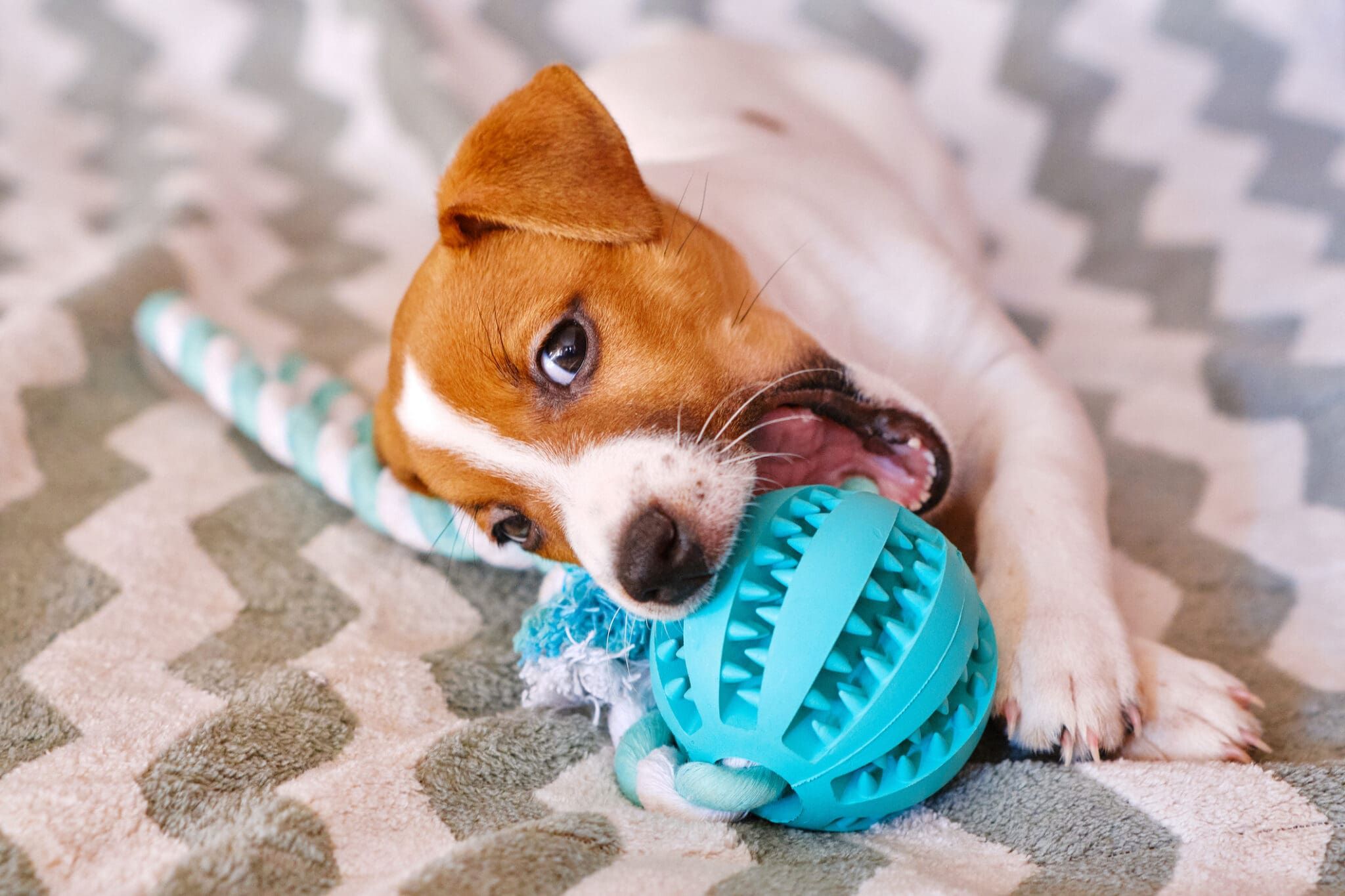Teething can be a trying time for puppies and their owners. As puppy teeth fall out to make way for adult teeth, which typically begins around the age of 4 months and lasts until 7 months or so, the urge to chew is strong. Puppy teething toys can help by providing appropriate, appealing, and safe ways for a young dog to meet that need—not to mention saving the furniture.
These days, there are an overwhelming number of puppy teething toys to choose from. When selecting toys, safety considerations like size and durability should always come first. It’s also important to get a good variety of toys and pay attention to what types and textures your individual puppy likes best.
Picking Puppy Toys for Teething
There are four main things to keep in mind when finding the right puppy teething toy:
- Finding a properly sized teething toy for your young dog boils down to how big your puppy is currently and how much he is likely to grow. As with older dogs, chew toys for puppies should never be small enough to swallow. This is especially important as puppies grow rapidly during the same time period they are teething. A toy that was the right size for a 25-pound four-month-old could easily become a choking/swallowing hazard for a 40-pound seven-month-old. Pay attention to how much your puppy has grown and make sure to immediately remove any toys that are getting too small. When in doubt, a larger toy is better than a smaller one.
- There are a lot of materials to choose from when it comes to puppy teething toys. The biggest consideration here is to find toys pliable enough that a good chew doesn’t risk breaking puppy teeth, which are smaller and more fragile than their adult counterparts. Selecting toys labeled specifically for puppies is generally a good way to go. In addition, it’s worth avoiding raw bones or hard chew toys at least until your puppy’s adult canines have come in. Overall, puppy teething toys should have some give when you squeeze them.
- With a developing puppy, you may not yet know what kind of chewer you have on your hands. Do you have a delicate nibbler who will be carrying the same stuffy with him until old age or a dedicated chewing machine who will tear the strongest rubber toy to bits in an hour and a half? Buying well-made, sturdy puppy teething toys is a good place to start, but no toy is destruction-proof. Chewing sessions should be monitored and a toy should be swapped out for something more durable if the puppy starts to pull pieces off of it. If you have a heavier chewer, don’t be surprised if anything designed for less enthusiastic chewing isn’t suitable for him.
- Pay attention to what kind of texture your puppy prefers. Some like soft plush toys for teething while others would rather have something more substantial to sink their teeth into. Finding a texture that appeals to a puppy can keep them from going in search of something he likes better such as your shoes or his human sibling’s favorite stuffed bunny.
Good Options for Puppy Teething Toys
Whole Dog Journal is reader-supported. If you purchase through links on our site we may earn a commission. Whole Dog Journal does not accept money for its food and product reviews.
What kinds of toys meet these criteria? As it turns out, there are quite a few. Here are three of our favorites:
- Kong Puppy Chew Dog Toy: Kong makes puppy-specific versions that stand up well to some serious chewing but are still squishy enough that breaking puppy teeth is unlikely. There are a variety of sizes and they can be stuffed with different foods and treats for long-lasting play. It can also be frozen to provide additional relief for sore gums.
- Nylabone Teething Ring Puppy Chew Toy: This toy comes flavored and can be frozen. The texture can help stimulate the gums and relieve some of the pain and pressure of new teeth breaking through. The unique shape can help your puppy reach their back teeth.
- Booda Multi Color 2-Knot Rope Bone Dog Toy: A well-made rope toy is also good to try with teething puppies. The texture gives them something to sink their teeth into and the material will stand up to some heavy chewing—not to mention it makes for some good games of tug and chase. This product has five different sizes and a variety of colors. It’s also machine washable.
In addition, plush toys are a favorite of many young dogs. The soft material can be comforting and is often easier to chew when puppy teeth are loose and too much pressure on them can hurt. The caveat is that plush toys are the least likely to stand up to chewing. If the fabric gets too worn or stuffing starts to fly, it’s time for a different toy.
While not a puppy teething toy in the traditional sense, fresh carrots can serve the same purpose. Pick a carrot that is big enough that the puppy won’t be able to swallow it whole then wash, peel and cut the ends off of it. From there, the carrot can be given to the puppy raw, lightly steamed, or frozen depending on the dog’s preference. Keep an eye out. You should take it away before it gets small enough to be a choking hazard. However, the remains can be cut into bite-sized bits that can be used as training treats or added to a meal.

